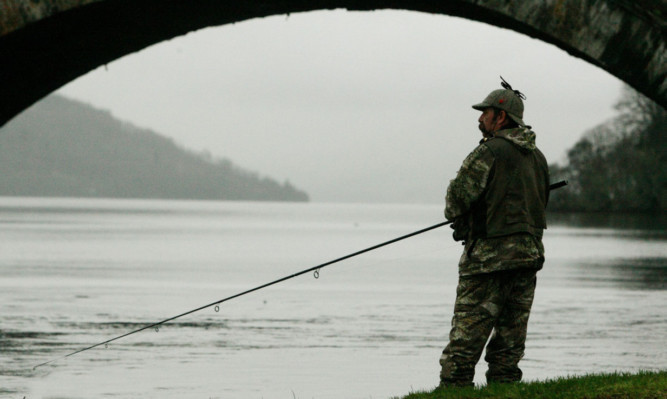Catches of salmon on the River Tay last month plummeted to the lowest levels for 50 years, it has emerged.
One leading expert said the shock figures could be due to factors far beyond the waters of Scotland’s largest salmon river and may require international cooperation to be addressed.
Dr David Summers is director of the Tay District Salmon Fisheries Board, the body empowered to protect and improve fishing on the Tay.
“Obviously it is very concerning,” he said.
With numbers of salmon falling across Scotland, some bodies have focused on coastal netting for the decline and have called on the Scottish Government to take action to protect depleted and fragile stocks.
Dr Summers believes the plight of grilse salmon that have spent only one winter at sea before returning to the river may be a much more complex issue, with rising sea temperatures a major factor.
While March and April were quite good for anglers, things “tailed off” dramatically in July, he said.
“What’s happened to the 2014 grilse? This is a question on everyone’s mind at the moment.
“The rod catches on the Tay for July are the worst reported for a long time. Certainly they have not been so low since the 1960s.
“Even the improved catches made with higher water and lower temperatures during the second week of August do not suggest as great an influx of fresh grilse as might be hoped for after a long dry spell.”
The poor grilse run has been “universal around Scotland” and even as far afield as Iceland, Dr Summers added.
“Owing to the geographically widespread nature of the phenomenon and, taking into account the fact that grilse seem again to be of smaller average size, the problem would appear to lie at sea and perhaps not all close to the UK.”
Academic research has pinpointed rising water temperature in the Norwegian Sea as having a deleterious impact on grilse, leaving them in poor condition and more susceptible to dying and predators.
Temperatures over much of the northern North Atlantic were above average, with warmer seas becoming more salty.
“These physical changes have had biological consequences,” Dr Summers said.
Despite the poor catches in July, he said August was thankfully proving more promising in terms of fish caught and “only time would tell” how the various factors would impact on figures for the Tay season.
